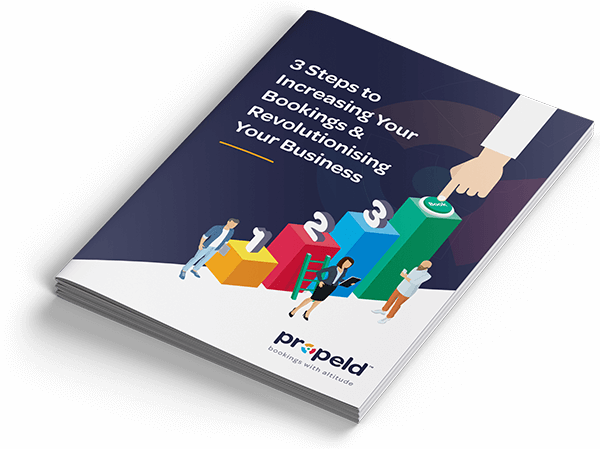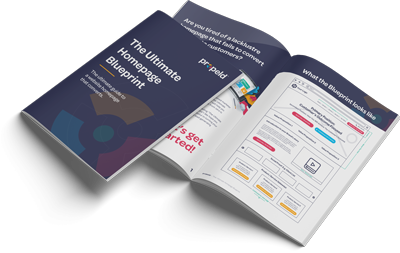When it comes to marketing your business, there’s nothing more frustrating than investing time, effort, and money into activities that fail to generate sales, enquiries, leads, or bookings. Many things can go wrong in a campaign. But the main issue we see most often is at the conversion point of the campaign, usually your website.
Before diving into advertising or PR, it’s crucial to ensure your website is optimised to maximise conversions and prevent potential customers from slipping away.
In this article, we’ll explore the underlying reasons why your website might not be generating the desired outcomes. By addressing these issues, you can create a powerful online presence that effectively drives results for the long-term.
Five Key Factors Impacting Your Website’s Performance
If you’re not seeing results through your website, you’ve got at least one of these issues with your site.
- Your website lacks clarity about what you offer
- Your website doesn’t meet the hygiene test.
- You’re not getting any traffic, or traffic is going to the wrong pages.
- You’re not establishing enough trust for the user to take the next step.
- You’re making it too hard to buy.
You’re making your visitor think too hard
Making your potential customer think too hard when they first visit your website is perhaps the biggest culprit for an underperforming website. The root cause of this is that your website lacks clarity around what it is you offer and how it can help your customers visiting your site. When visitors are presented with confusing or unclear messaging, they are forced to put in extra effort to understand what the website offers or how it can benefit them. This cognitive load can lead to frustration and a negative perception of the website and ultimately their choice to buy from you.
All of this leads to a negative user experience which causes the visitor to:
- become confused & frustrated
- be skeptical of the offer presented
- trust your brand less and question your credentials
- leave your website without performing the desired action
Simply put, a lack of clarity creates a barrier to engagement.
To overcome this your website needs to help the visitor answer these questions easily and quickly for there to be any chance of them taking the next step.
- Who is this brand and what do they offer?
- How will their offer improve my life?
- Why are they the best option for me to choose?
- Can I trust them?
- How do I take the next step (buy)?
Answering these questions in a concise and easy-to-understand way is paramount to getting the visitor to progress further along their buying journey. To frame these answers on your website you need to utlise the following tools, which can be found in our website blueprint:
- Positioning Statements: A positioning statement communicates a company’s unique value to its customer and how it differentiates from competitors in the market.
- Value Proposition: Value propositions are clear statements that communicate the benefits of a product or service to customers.
- Call To Action: A sales call to action is a prompt that urges potential customers to take immediate action toward a purchase.
- Social Proof: Social proof can be used to build trust and credibility, increase conversions, and influence behaviour by showcasing the positive experiences of others.
Your website doesn’t meet the hygiene test.
Your website doesn’t need to be a work of art, but it must pass the hygiene test. What I mean by that is your website’s look shouldn’t put anyone off. In a world where users will form an impression about your business in less than a second, you can’t afford to have people landing on an unappealing and unhygienic site.
Yes, beauty is in the eye of the beholder, and everyone has their own subjective opinions about what they do and don’t like. But at the end of the day, as long as your website meets the hygiene standard and functions as the user expects it to, then it shouldn’t cost you any customers.
So, what are the hygiene standards you should be aiming for?
Glad you asked. Here are some of the big ones you need to assess on your site:
- It needs to be mobile responsive. That means it looks good on any device – Laptop/Desktop/Phone/Tablet etc. Customers shouldn’t have to pinch and squeeze to read what’s on your site.
- Have professional, well-written copy on your site. Don’t believe the myth that people don’t read on the internet; it’s BS created by people who are too lazy to write their website copy.
- Consistent application of your brand elements. Your website should represent your brand online, so make sure the fonts/logos/colours/voice all adhere to your brand’s style guide.
- Your photography is up to date. Dated photography can be off-putting to customers and lead them to think your business is past its prime.
- It needs to load quickly. Seconds count when making a first impression. A slow website can be frustrating enough for a potential customer to leave your site without booking.
- Fix broken pages asap. Visit your website regularly and navigate it as a customer would. Keep an eye out for links that go to broken or missing pages and fix them up, so you don’t leave your potential customers back clicking, lost and frustrated.
You’re not getting any traffic.
It’s crazy, but if you’re not getting any traffic to your website, then you won’t see any results… Duh right?!
Even though it’s something so simple, it can happen. The Internet is a big place, and just because your website is out there, it doesn’t mean that anyone is visiting it.
You need to familiarise yourself with tools like Google Analytics & Search Console and check in on them at least once a month to see how people find your site and use it. These tools will help you diagnose why lookers aren’t converting into bookers.
And remember to search for your business regularly to see how it appears in the search results. If it appears at all!
You’re not trustworthy.
When asking people to buy a service or product on your website, you need to establish a certain level of trust. If you’re not seeing many results come through your site, it could be that your potential customers aren’t trusting you enough to take the next step.
I’m not talking about security certificates on your website or anything like that (although not having these may decrease trust in your website as well). I’m talking about potential customers not buying what you’re selling, and perhaps they think you’re a tad inauthentic.
So, how do you establish trust through a website?
Good question and there are no silver bullets. It takes a concerted effort to establish trust with your website. Here are several things that we use to establish more trust in our clients’ websites:
- Showcase your best reviews. Do you know who your potential clients listen to? That’s right, your actual customers. To add extra credibility to your testimonials, include the name and a photo of the customer. Better yet, get them to give you a video testimonial and add that to your site.
- Promote other well-known brands you’ve worked with. If you’ve been mentioned in a newspaper or reputable online publication, make sure you promote this on your site where visitors will see it. Likewise, if you partner with other successful businesses in your region, share their logo and discuss how you’ve worked with them.
- Stop relying on stock photos. There comes a time when you need to invest in authentic photography of your own business. Stock photos are fake, and if they’re the only thing you’re showing on your site, visitors will be less likely to trust what you are selling.
- Tell the story behind your business. Human’s have been telling & sharing stories for more than 30,000 years. So it’s no surprise that storytelling helps us connect and establish trust and the same is true between your brand and your customers. Think about how you can tell your origin story on your website or share a story about a part of your business to engage your potential customers and persuade them to take the next step.
- Leverage user-generated content. Get your customers to tag your branded hashtag on social channels, like Instagram. You can display this type of feed on your website to leverage and showcase your customer’s experience with your brand.
It’s hard to buy
We all prefer to buy in our own way; some of us like to call and speak to a person, while others only get the chance to research and buy late at night. You mustn’t limit your website’s ability to convert a customer to only the method you prefer.
For example, you may think you’re offering outstanding customer service by politely taking customer phone calls during office hours. But what you’re doing is frustrating your lookers who are trying to buy or engage with you out of hours, by forcing them to find time the following day to call and buy.
With the ability to take orders, enquiries, and bookings online these days, customers have come to expect the option to buy at any time of the day or night; if they can’t do that, they’ll probably go elsewhere.
Here are some best practices to improve the buying process on your website.
- Make it super clear how to buy on your site using strong and straightforward Call To Actions. Your call to actions should stand out on the page and draw the attention of your visitor’s eye.
- Use an eCommerce, CRM or booking system so customers can buy at any time of the day or night.
- Consider working with an answering service to ensure your phone is answered 24/7.
- If an answering service isn’t your thing, allow customers to leave a message and be transparent with them when you will follow up on their request.
- Don’t leave customers wondering when they submit a contact form on your site. Set up an autoresponder that gets sent to them straight after they submit.
- Just like with your contact forms, set up autoresponders in Facebook & Instagram so that customers feel acknowledged when they send you a message.
Take a step back, to go to new heights.
Don’t make the mistake of spending money and effort on accelerating your business’s marketing with advertising or PR before your sales machine is ready to deliver a handsome return on your investment.
Take a second to look at your website through the lens of your customer and see if there are opportunities for you to improve it to their needs. Sometimes a second set of impartial eyes can come in handy, and that’s where we can come in. If you’d like us to walk through your website and provide our professional feedback, please get in touch to start a conversation.
If you’re ready to elevate your brand and marketing to new heights, you might be the right fit for our Flight Plan to Success, where we’ll outline the crucial steps you need to take to ensure your business can generate more marketing results on autopilot.

